To start expanding my knowledge of pottery, I decided to research its origins and path throughout history.
I began with a quick search of my favourite podcast “Stuff You Should Know” hosted by Josh Clark and Charles W. “Chuck” Bryant to see if they had covered this topic. Unfortunately, they have not, but there is an excellent article on their home site HowStuffWorks called “How Pottery Works” by Emilie Sennebogen. The podcast and website are excellent ways to learn about a new topic, as information is shared in an engaging way. They employ humour and well researched, cited material to entertain and educate.
Pottery most likely started during the Neolithic Revolution, as hunters and gathers started to settle, farm and raise animals. They needed a storage solution that was better than a woven basket, especially for storing liquids. Clay is a common substance found around the world and it is easy to give it a basic shape by hand. Pottery was most likely discovered by accident, as someone left a chunk of clay in a large fire. The first forms of pottery were pots made from coils of clay built up from a circular base, smoothed out by hand and baked in a large bonfire.

Coiling technique, photo by Andy Ward
The oldest ceramics found in Canada were from northern Yukon, and it is guessed that it was introduced around 1500 BC. They have similar designs and styles to the Siberian Neolithic. Ceramics did not however spread south from Yukon. Other artifacts in eastern Canada during this time period most resembles pieces found in Ohio and Illinois. Because of these implications researchers are able to us pottery to understand how populations travelled. Coiling techniques among North American Indigenous peoples were similar to those used in other cultures. Later, there is evidence that they used woven molds as a template. The coils of clay would be built around these molds, and then the outside would be paddled to smooth out and thin the walls of the container.
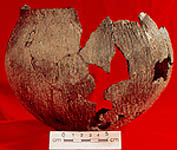
Pot made by Sioux, photo by Jean-Luc Pilon
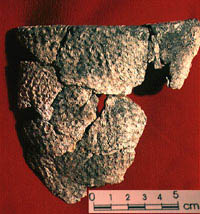
Recovered from Engigstciak site in Northern Yukon, photo by Jean-Luc Pilon
The next best invention in the world of pottery is the potter’s wheel. Prior to this, pottery built by hand was never perfectly round. It is most likely that around 3000 BC a basic revolving wheel, pushed by hand, was invented in Mesopotamia. The Greeks are attributed for establishing pottery as an art form. They were the first to introduce beautiful designs and colours through ingredients like ochre and potash. Over time, technological advancements like the electric wheel and better kilns allowed for more artistic expression along with practicality.
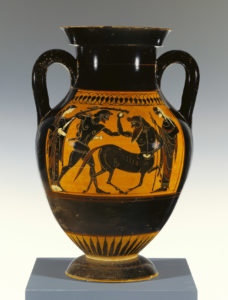
Greek storage jar, from J. Paul Getty Museum
There are three types of clay in pottery: earthenware, stoneware and kaolin (or white). Earthenware is the most common, and most likely to be what the first potters used. I use this type of clay in my pottery. Earthenware clay is porous and therefore needs a sealing glaze to be food safe or water proof. Stoneware is more robust and is fired at a higher temperature. You do not need to glaze this type as the high temperature turns it into a glass like substance that is water proof. Kaolin clay makes porcelain. It is much less elastic, making it more finicky than the other two types, but makes beautiful, delicate pieces.
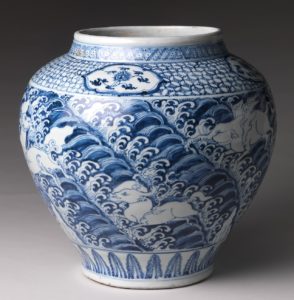
Ming dynasty porcelain jar, public domain
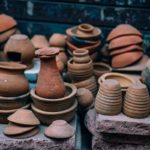
Earthenware, photo by Peter Deneen

Stoneware, from Edward C. Moore Collection
Pottery can be an expression of creativity, or a way to make a practical tool, but it is often a combination of both. This week, I decided to focus on the history of pottery, next week I am going to start throwing some pieces to begin my first goal, plates and flower pots.
Resources:
Gascoigne, Bamber. “History of Pottery and Porcelain.” History World. http://www.historyworld.net/wrldhis/PlainTextHistories.asp?historyid=ab98
Sennebogen, Emilie. “How Pottery Works.” howstuffworks. https://home.howstuffworks.com/green-living/pottery1.htm
Birch, Samuel. (2015). History of Ancient Pottery. Cambridge University Press.
Pilon, Jean-Luc. “Pottery-Making Techniques”. Canadian Museum of History. https://www.historymuseum.ca/cmc/exhibitions/archeo/ceramiq/cerart5e.html
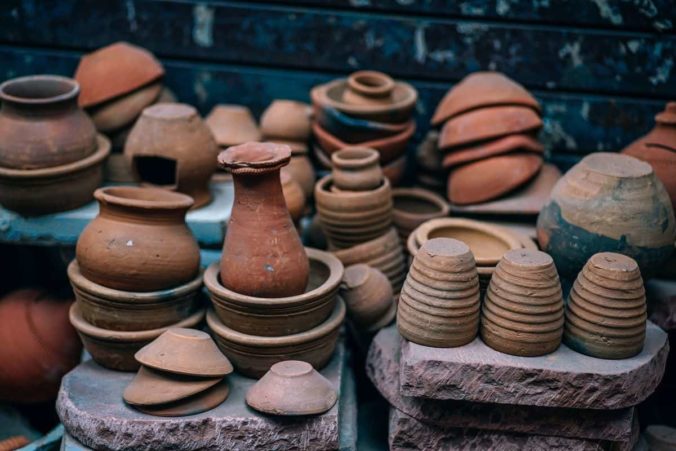

Leave a Reply
You must be logged in to post a comment.